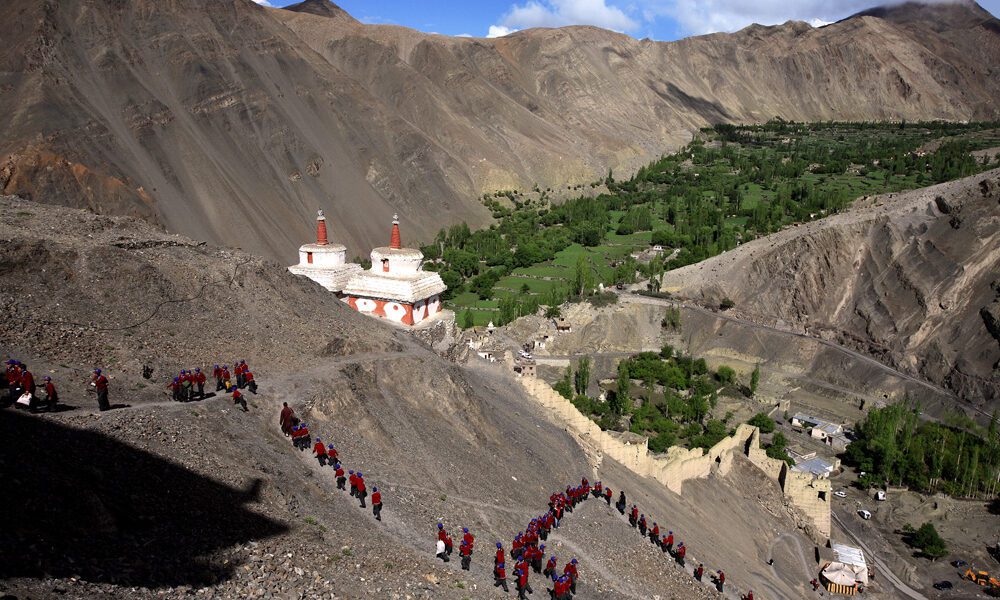Nestled in the high-altitude landscapes of Northern India, Ladakh offers a culturally immersive journey through its remote, lesser-known villages. A village-to-village trek here is more than just a physical adventure; it’s a journey into a living heritage. Moving from one mountain village to another, travelers experience ancient traditions, Buddhist monasteries, local hospitality, and the breathtaking beauty of Ladakh’s remote regions.
Whether you’re a seasoned trekker or simply someone with a curiosity for heritage, Ladakh’s village-to-village trek promises an authentic and sustainable travel experience that supports local communities. In this post, we’ll guide you through everything you need to know for planning a meaningful trek through these hidden gems of Ladakh.
What Makes Village-to-Village Trekking in Ladakh Unique?
Village-to-village trekking in Ladakh is a unique experience that combines stunning landscapes with rich cultural immersion. This type of trek allows travelers to bypass the typical tourist hubs and venture into the heart of Ladakh’s mountain settlements. Here, each village tells its own story, shaped by centuries-old Buddhist traditions and Ladakhi customs.
“Trekking through Ladakh’s villages was a surreal experience. The mountains were stunning, but it was the cultural richness of the villages that truly made it special. Each village had its own charm, and the hospitality was incredible.” — Maria Lopez, Cultural Anthropologist, Spain
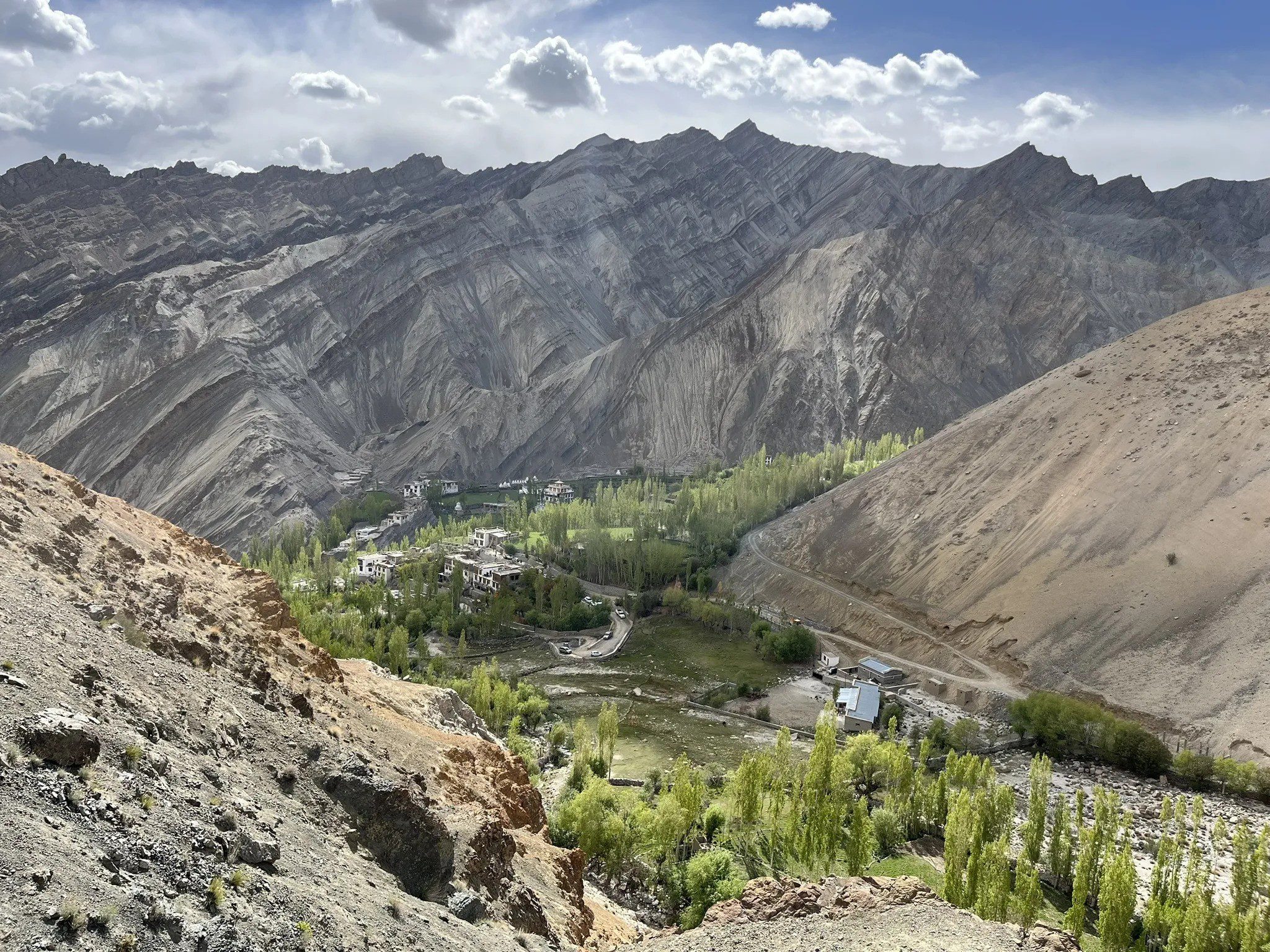
Importance of Sustainable and Eco-Friendly Trekking in Ladakh
Sustainable tourism is crucial in Ladakh, given its fragile ecosystem and remote location. By choosing eco-friendly practices, such as staying in local homestays and minimizing waste, trekkers help preserve the natural environment and support the local economy. These practices not only protect Ladakh’s stunning landscapes but also empower its rural communities to thrive while preserving their traditional way of life.
Quick Tips for Eco-Conscious Travel in Ladakh
– Stay in homestays to support local families.
– Use reusable water bottles to reduce plastic waste.
– Respect local customs and traditions by dressing modestly and seeking permission before taking photographs.
– Pack out all waste and leave no trace.
Preparing for the Trek: Essential Insights
Best Time to Trek Ladakh’s Traditional Villages
The ideal time to embark on a village-to-village trek in Ladakh is from May to September. During these months, the weather is relatively mild, with temperatures suitable for trekking and villages more accessible. Winter treks are possible, but the extreme cold and snow make them challenging for all but the most experienced trekkers.
Essential Gear for High-Altitude Village Trekking
Preparing the right gear is essential for an enjoyable and safe experience in Ladakh’s high-altitude regions. Here’s a list of recommended items:
| Essential Gear | Purpose |
|---|---|
| Waterproof hiking boots | For rugged mountain trails |
| Warm clothing layers | To adapt to temperature changes |
| Sunscreen and sunglasses | Protects from high-altitude UV rays |
| Portable water purifier | Safe drinking water on the trail |
| First-aid kit | Essential for remote trekking |
“Packing layers was a lifesaver! The mornings were chilly, but as we trekked through the day, the sun made it warm enough to shed layers.” — James Miller, Travel Photographer, USA
Tips for High-Altitude Adaptation in Ladakh
Ladakh’s altitude can range from 3,000 to 5,000 meters. Travelers are encouraged to spend the first few days acclimatizing to avoid altitude sickness. Drink plenty of water, avoid alcohol, and consider consulting a doctor about altitude sickness medication before you go.
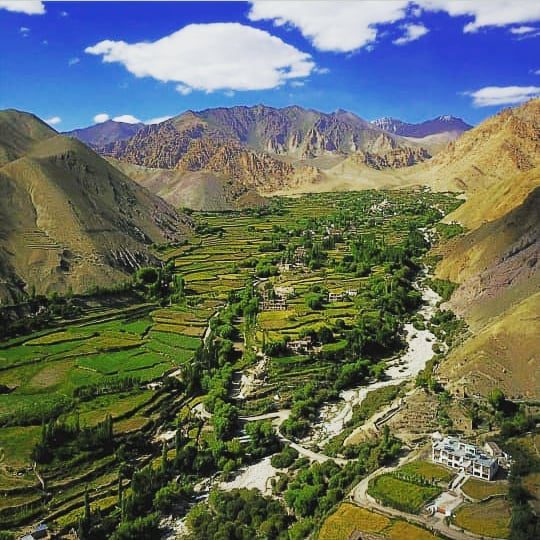
Route Overview: Exploring Ladakh’s Hidden Villages
Suggested Village-to-Village Trekking Routes
Exploring Ladakh’s lesser-known villages is a truly rewarding experience. Here are some suggested routes:
– Likir to Yangthang: A gentle trek through picturesque landscapes, ideal for beginners.
– Tingmosgang to Hemis Shukpachan: Known for its stunning rock formations and vibrant local culture.
– Lamayuru to Chilling: This moderate trek passes through ancient monasteries and lush valleys.
Highlights of Trekking in Ladakh’s Remote Villages
– Local Monasteries: Many villages have ancient monasteries where you can learn about Buddhist traditions.
– Scenic Passes: Treks often pass through scenic mountain passes offering panoramic views.
– Cultural Landmarks: Each village has its own unique architecture, from mud-brick homes to intricate wall paintings.
Seasonal Accessibility of Ladakh’s Traditional Settlements
While May to September is the best season, some higher-altitude villages are accessible only in summer. Winter brings heavy snowfall that can block roads and make certain areas inaccessible.
Experiencing Traditional Ladakhi Culture and Heritage
Staying in Ladakh’s Rural Homestays
Homestays are a highlight of village-to-village trekking in Ladakh, offering travelers a unique chance to experience Ladakhi hospitality firsthand. Guests are typically welcomed with traditional butter tea and enjoy hearty meals prepared with local ingredients.
“Our homestay experience was unforgettable. We were treated like family and even got to learn how to make local bread. It felt like a home away from home.” — Lars Thorsen, Environmental Scientist, Norway
Local Customs and Traditions: What to Know Before You Go
Ladakhis are deeply rooted in their traditions, and respecting these customs is essential. For example, a simple bow with hands folded in prayer (a “namaste”) is a respectful greeting. Visitors should always seek permission before photographing people or sacred sites.
Traditional Ladakhi Cuisine on the Trek
Ladakhi cuisine reflects the region’s mountain lifestyle, with dishes like thukpa (noodle soup), momos (dumplings), and paba (barley bread). These dishes are hearty and provide the necessary energy for trekking in high altitudes.
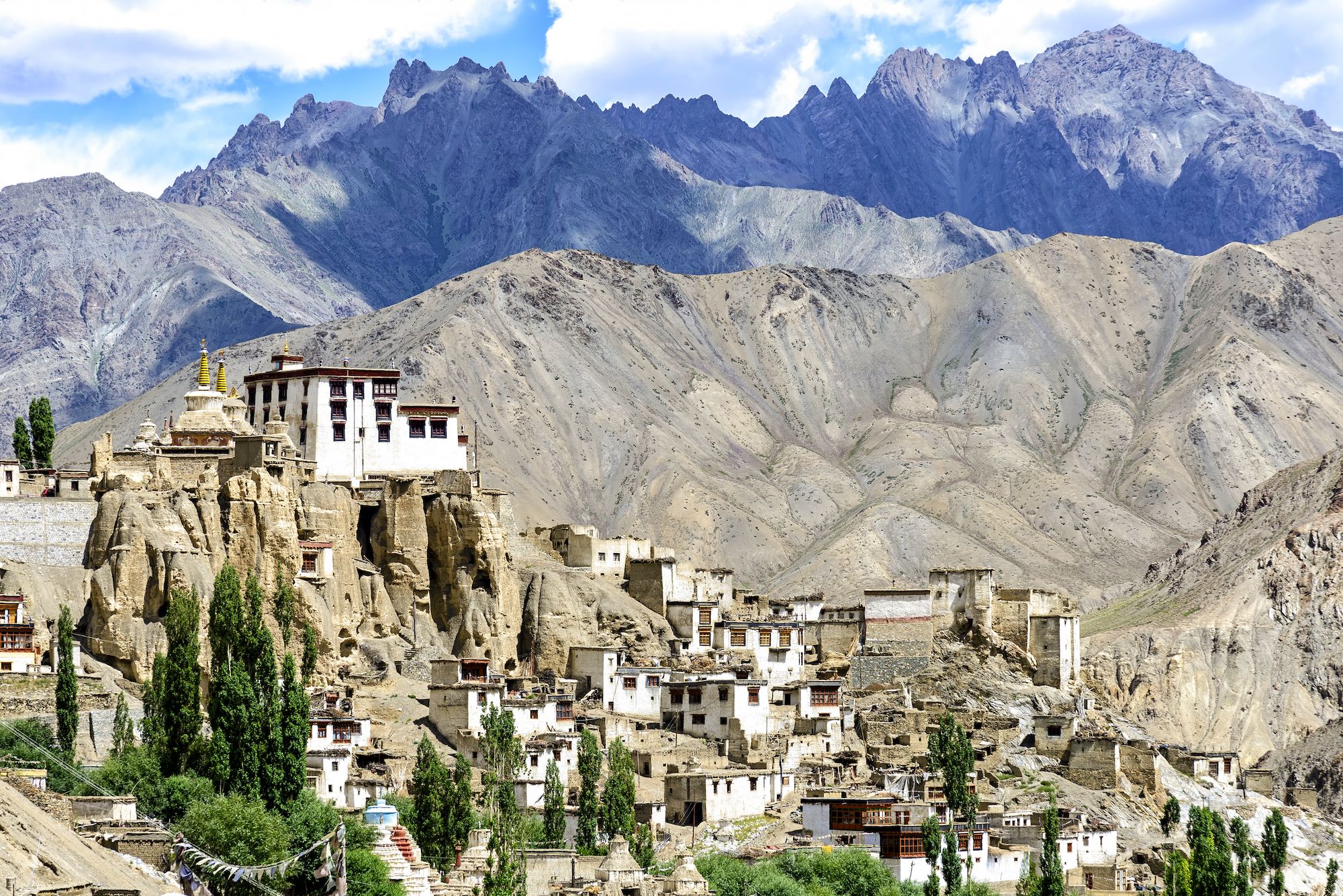
Highlights of Ladakh’s Cultural Heritage Along the Trek
Buddhist Monasteries and Spiritual Sites En Route
Ladakh’s monasteries are some of the oldest in the region, housing ancient relics and colorful murals. Key monasteries to visit include those in Yangthang, Hemishukpachan, and Lamayuru.
Traditional Ladakhi Crafts and Artisans in Remote Villages
In many villages, artisans create beautiful handicrafts using traditional techniques. Trekkers can find woolen products, handwoven rugs, and silver jewelry made by local craftspeople, perfect as souvenirs that support the local economy.
Preserving Ladakh’s Cultural and Natural Heritage
By trekking sustainably, travelers play a role in preserving Ladakh’s culture and natural beauty. Organizations and locals work together to promote responsible tourism that respects Ladakhi customs and landscapes.
Benefits of Choosing a Village-to-Village Trek
Supporting Local Communities Through Sustainable Tourism
Trekking through remote villages not only gives you a richer experience but also directly supports Ladakhi families. Each stay in a homestay is an opportunity to contribute to the local economy, helping preserve their culture and heritage.
Eco-Conscious Travel in Ladakh’s Villages
Eco-friendly travel options, such as waste reduction and choosing homestays over larger tourist accommodations, minimize the impact on Ladakh’s environment and help promote a culture of responsible tourism.
“It felt great to know that my journey was supporting local families. I learned so much about their way of life and how they work to preserve their land and culture.” — Elena Garcia, Sustainability Consultant, Argentina
Finding Solitude and Connection in Ladakh’s Remote Settlements
Unlike crowded tourist spots, Ladakh’s hidden villages offer a sense of solitude and tranquility. This peaceful environment allows trekkers to connect with nature and reflect, providing a rare escape from the pressures of modern life.
Planning Your Village-to-Village Trek Itinerary
How to Build a Custom Trekking Route Through Ladakh’s Villages
When planning your itinerary, consider the duration, difficulty level, and specific villages or monasteries you’d like to visit. Local guides or trekking companies can help craft a route that suits your preferences and fitness level.
Recommended Village Homestays for Trekkers
Each village offers unique homestay options. Here are a few to consider:
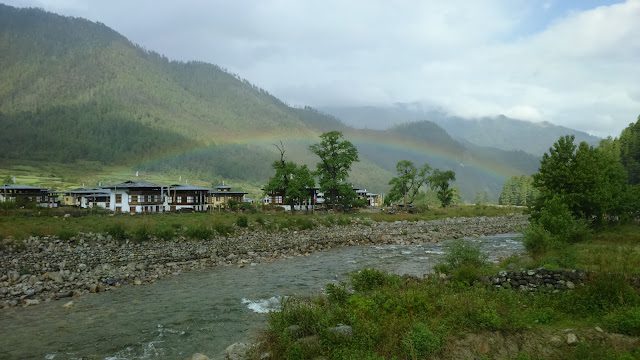
– Yangthang Village Homestay – Known for traditional decor and warm hosts.
– Hemishukpachan Village Homestay – Offers delicious home-cooked meals.
– Lamayuru Village Homestay – Great for those interested in nearby monasteries.
Hiring a Local Guide for Village Trekking in Ladakh
Hiring a local guide is highly recommended for these remote treks. Guides are familiar with the landscape, and they can introduce travelers to Ladakhi culture and traditions in ways that make the journey more meaningful.
Essential Travel Tips for a Successful Village Trek in Ladakh
Responsible Travel Practices for Trekking in Rural Ladakh
Respecting the natural and cultural environment is key. Avoid littering, follow trail guidelines, and be mindful of local wildlife. Practicing responsible travel ensures future generations can experience Ladakh’s heritage as well.
Health and Safety Tips for Remote Village Treks
Pack a first-aid kit, stay hydrated, and maintain a steady pace to avoid exhaustion. Ladakh’s high-altitude trekking can be strenuous, so taking breaks and pacing yourself is essential.
What to Expect in Terms of Food, Water, and Facilities
While Ladakh’s homestays offer comfortable accommodations, travelers should be prepared for basic facilities. It’s a good idea to carry some snacks, a portable water purifier, and personal essentials.
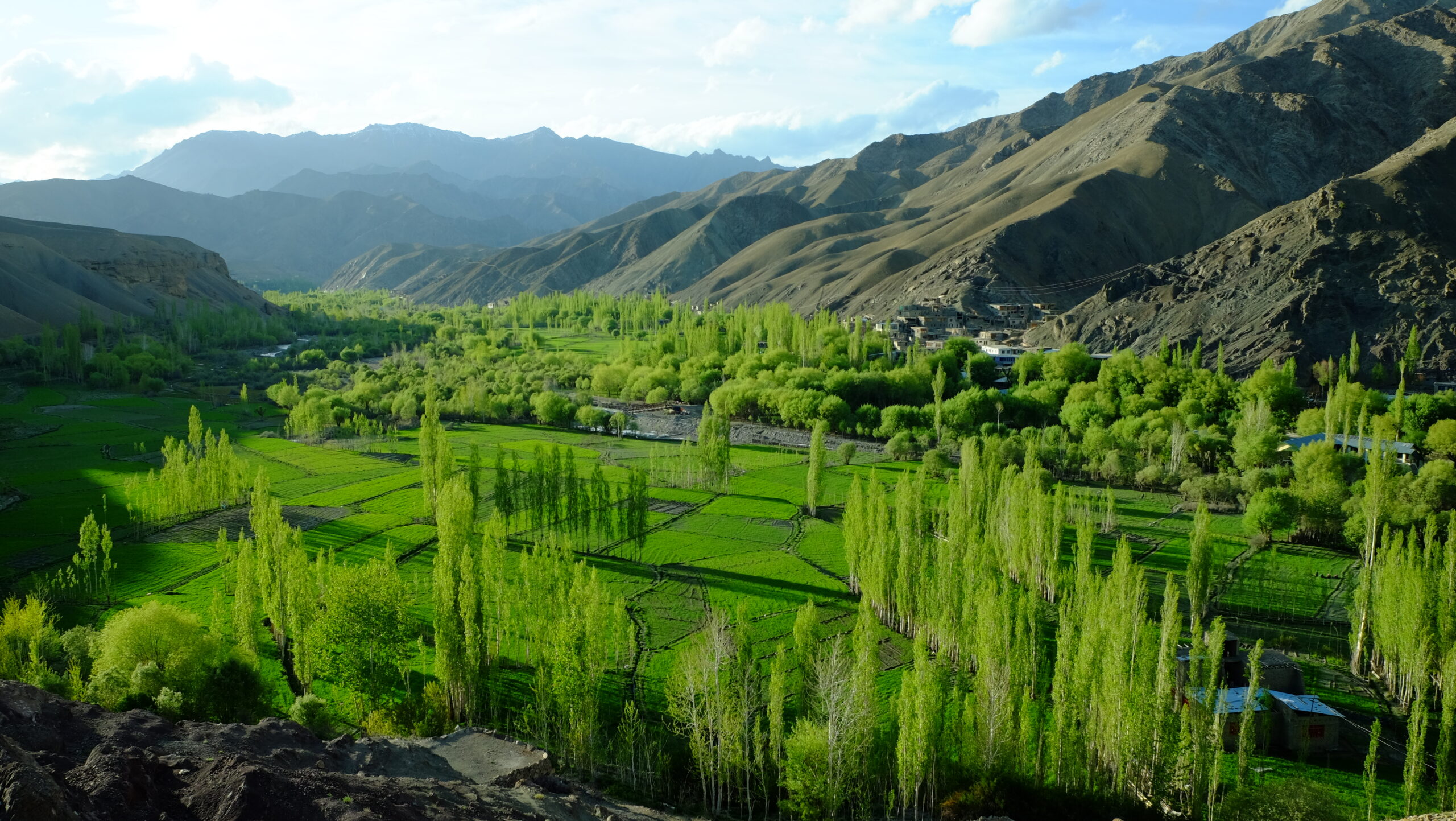
Frequently Asked Questions (FAQs)
Q: Is Village-to-Village Trekking in Ladakh Suitable for Beginners?
A: Yes, certain routes, like Likir to Yangthang, are suitable for beginners. However, some high-altitude treks require good physical fitness.
Q: Can I Trek Ladakh’s Villages Solo or Do I Need a Guide?
A: While solo trekking is possible, hiring a guide offers cultural insights and ensures safety in remote areas.
Q: What Permits Are Required for Trekking in Ladakh’s Lesser-Known Villages?
A: A permit from the Ladakh Autonomous Hill Development Council (LAHDC) is required for most trekking routes.
Q: How Can I Practice Eco-Friendly Trekking in Ladakh?
A: Pack out waste, use reusable containers, and respect the environment by following “Leave No Trace” principles.
Conclusion: Embracing the Living Heritage of Ladakh’s Villages
Embarking on a village-to-village trek in Ladakh offers a blend of adventure, tranquility, and cultural discovery. By treading lightly and choosing sustainable practices, travelers can help preserve Ladakh’s beauty for generations to come, ensuring that its living heritage continues to thrive.

